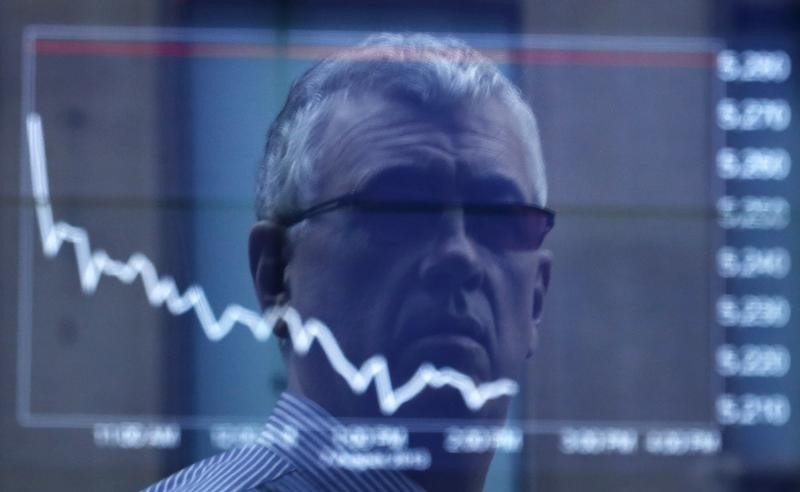Despite a strong finish last week on Wall St, the ASX is set to dip today. ASX 200 futures are down 0.2% to 8,031 points.
The ASX200 finished last week with a 68-point gain, rising by 0.85% to achieve a significant recovery, ending August flat overall.
This rebound mirrored trends on Wall Street and was supported by a decline in Australian inflation, which is anticipated to keep the Reserve Bank of Australia (RBA) from adjusting rates at its upcoming meeting.
The top-performing sectors last week were Real Estate (+2.21%), Financials (+2.15%), Energy (+1.13%) and Industrials (+1.09%). Conversely, Information Technology (IT) (-1.66%), Consumer Discretionary (-1.47%), Health Care (-0.56%) and Consumer Staples (-0.56%) lagged behind.
On the individual stock front, City Chic Collective Ltd (+42.86%), Mayne Pharma Ltd (+19.86%), Imugene Ltd (ASX:IMU, OTC:IUGNF) (+19.23%) and Nanosonics Ltd (+19.19%) emerged as the week’s top performers. In contrast, Johns Lyng Ltd (-29.25%), Appen Ltd (-28.57%), Cettire Ltd (-28.08%) and Tabcorp Ltd (-20.91%) were among the biggest decliners.
“This week, all eyes turn to Wednesday's June quarter (Q2) GDP release at 11.30 am. In the March Quarter (Q1) GDP rose by 0.1% for an annual rate of 1.1% YoY," IG Markets analyst Tony Sycamore said.
"While it was the tenth straight rise in quarterly GDP, it was the softest pace of growth in six quarters and compared with an average of 2.4% YoY over the past decade.
“For the June Quarter, the market is looking for a rise of 0.3%QoQ, which would see the annual rate ease to 1.0% YoY, fractionally above the RBA’s forecast of 0.9% YoY.
"At the start of this week, the Australian interest rate market is pricing in 20bp of RBA rate cuts by year-end and two full 25bp rate cuts by April 2025.”
Positive US results
Major US benchmarks finished August on a positive note.
US stock markets closed higher on Friday, buoyed by reassuring Personal Consumption Expenditures (PCE) inflation data. Headline PCE increased by 0.2% in July and 2.5% year-on-year, aligning with expectations.
The Federal Reserve’s preferred inflation measure, Core PCE, rose by 2.6%, slightly below the 2.7% consensus.
Despite a turbulent start to August, all three major indices finished the volatile month in positive territory, with the S&P 500 up 2.38%, the Dow Jones Industrial Average gaining 1.76%, and the Nasdaq rising 1.1%.
This week, investor attention will be centred on Friday’s Non-Farm Payrolls report, following a weak employment report last month that sparked a sharp sell-off over concerns of a potential hard landing. However, stronger-than-expected economic data since then has eased these fears, with many equity markets recovering towards previous highs.
“Should the US economy add 150,000 jobs or more and the unemployment rate ease to 4.2% or below, it would increase confidence that the economy is on target for a soft landing,” Sycamore said.
“On the flip side, if 90,000 or fewer jobs are created and the unemployment rate prints at 4.3% or higher, it would reignite fears of a hard landing, and support calls for a more significant 50bp Fed rate cut this month.
“For the record, the market anticipates a rise of 165,000 jobs in August and a fall in the unemployment rate to 4.2%. The rates market is pricing in a 70% chance of a 25bp cut and a 30% chance of a 50bp cut in September.”
European sharemarkets
Advanced on Friday, concluding a turbulent month on a positive note as a notable drop in eurozone inflation solidified market expectations for an interest rate cut in September.
Annual consumer prices in the 20-country eurozone decreased to 2.2% in August from 2.6% in July, matching the forecast and marking the slowest pace since July 2021.
The interest rate-sensitive real estate sector gained 1.4%.
- The continent-wide FTSEurofirst 300 index edged up by 0.1% to reach an all-time high, finishing August with a 1.4% gain.
- In London, the UK FTSE 100 index remained flat, posting a modest 0.1% increase for the month.
Currencies and commodities
Currencies
Weakened against the US dollar during European and US trading sessions.
- The Euro declined from US$1.1094 to US$1.1044, settling near US$1.1045 at the close of US trade.
- The Australian dollar eased from US$0.6816 to US$0.6750, ending near US$0.6765.
- The Japanese yen dipped from 144.81 yen per US dollar to JPY146.24, closing around JPY146.15.
Commodities
Global oil prices retreated on Friday, as OPEC+ confirmed plans to proceed with a scheduled oil output increase in October.
- Brent crude fell by US$1.14, or 1.4%, to US$78.80 per barrel.
- The US Nymex crude dropped US$2.36, or 3.1%, to US$73.55 per barrel.
- For August, Brent crude declined by 2.4%, and Nymex crude decreased by 3.6%.
Base metal prices also dipped on Friday as the US dollar strengthened following the release of US inflation data.
- Copper and aluminium futures both slipped 0.1%.
- For the week, copper was down 1.2%, while aluminium fell 3.2%.
- The gold futures price declined by US$32.70, or 1.3%, to US$2,527.60 per ounce on Friday, as the US dollar and Treasury yields strengthened following inflation data that met expectations.
- Spot gold was trading near US$2,503 per ounce at the close of US trade. Despite the dip, gold gained 2% in August.
- Iron ore futures fell by US$1.15, or 1.1%, to US$100.55 per tonne on Friday, pressured by ongoing weak near-term demand and rising inventories in top producer China. However, the steel-making ingredient recorded a second consecutive week of gains, up 2.5%.
What about small caps
The S&P/ASX Small Ordinaries (XSO) finished Friday 1.29% higher at 3,005.80. The index finished the week 0.35% down.
It has been a busy start to the day and you can read about the following and more throughout the day.
